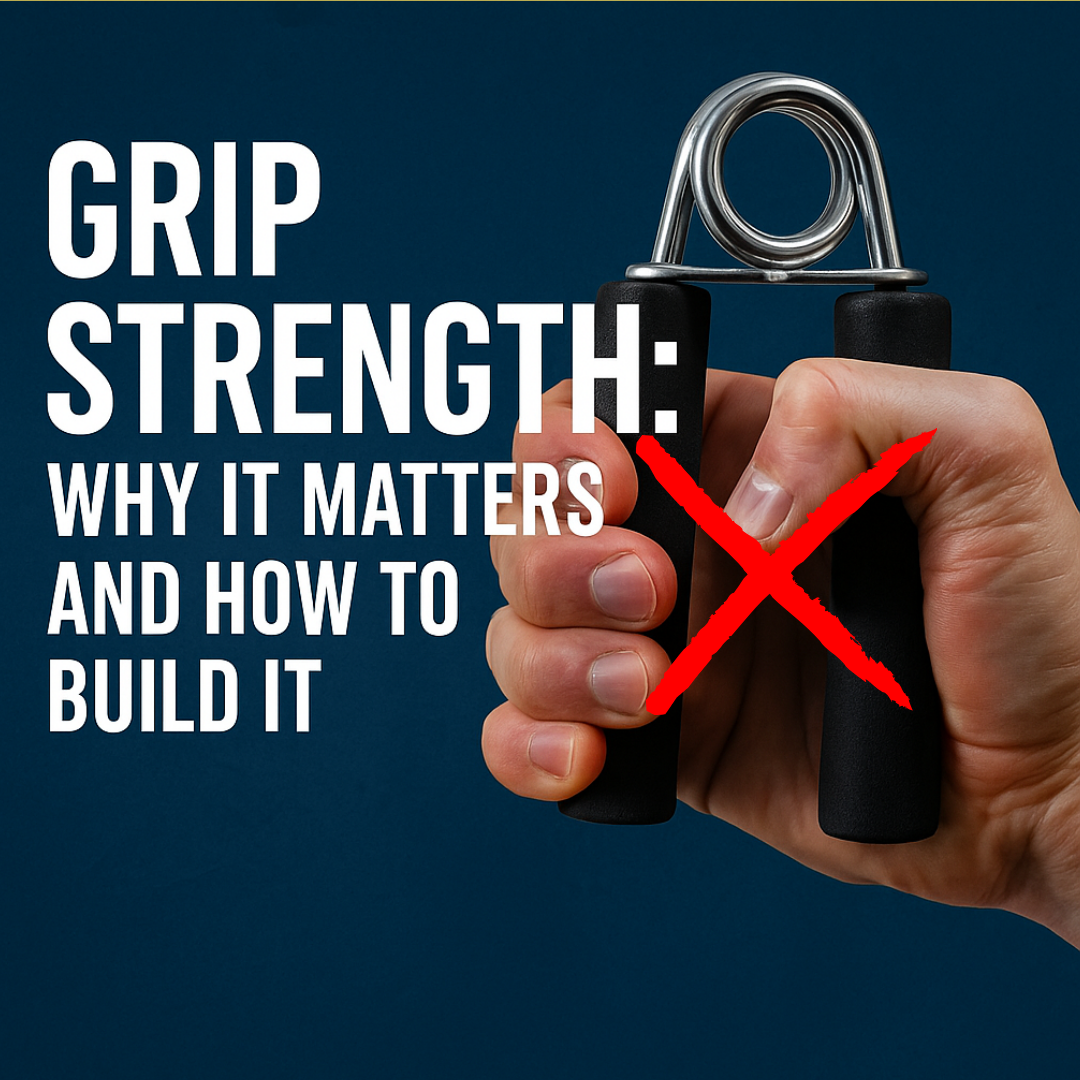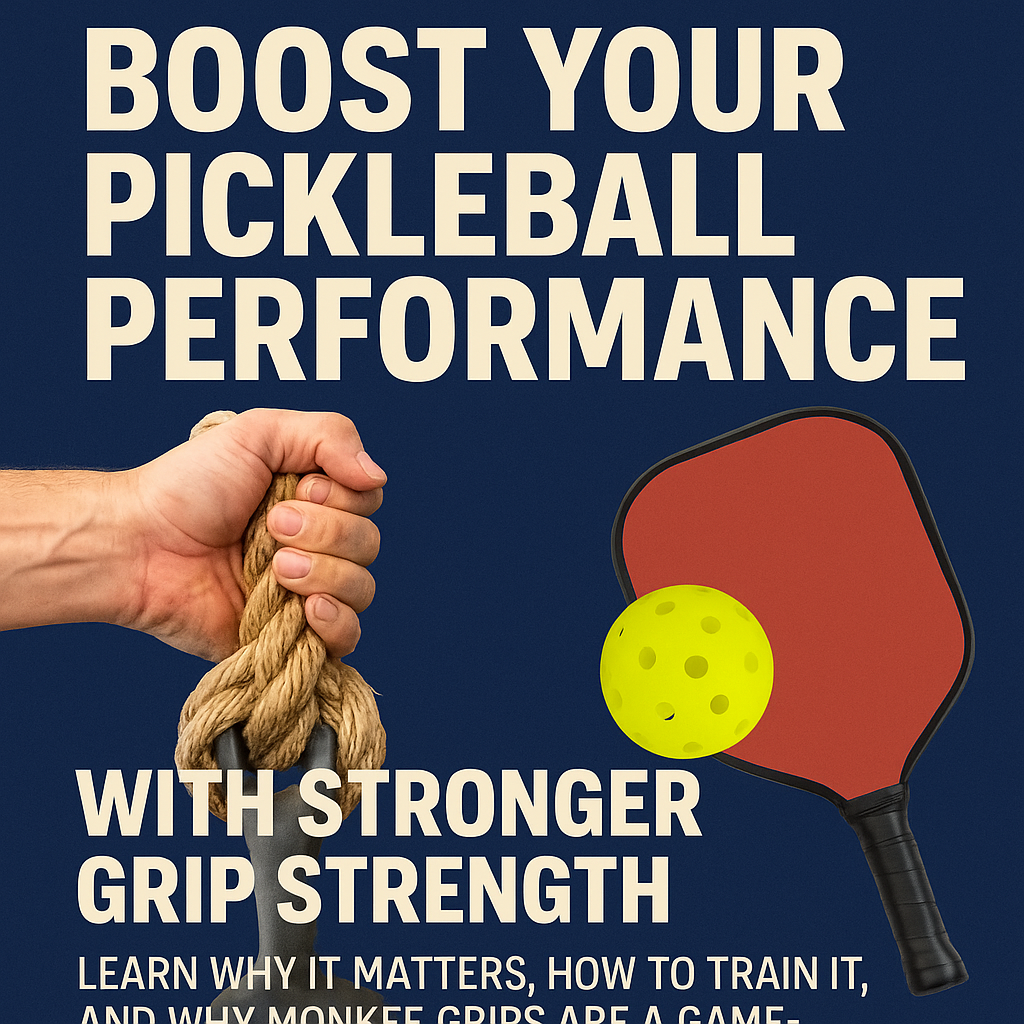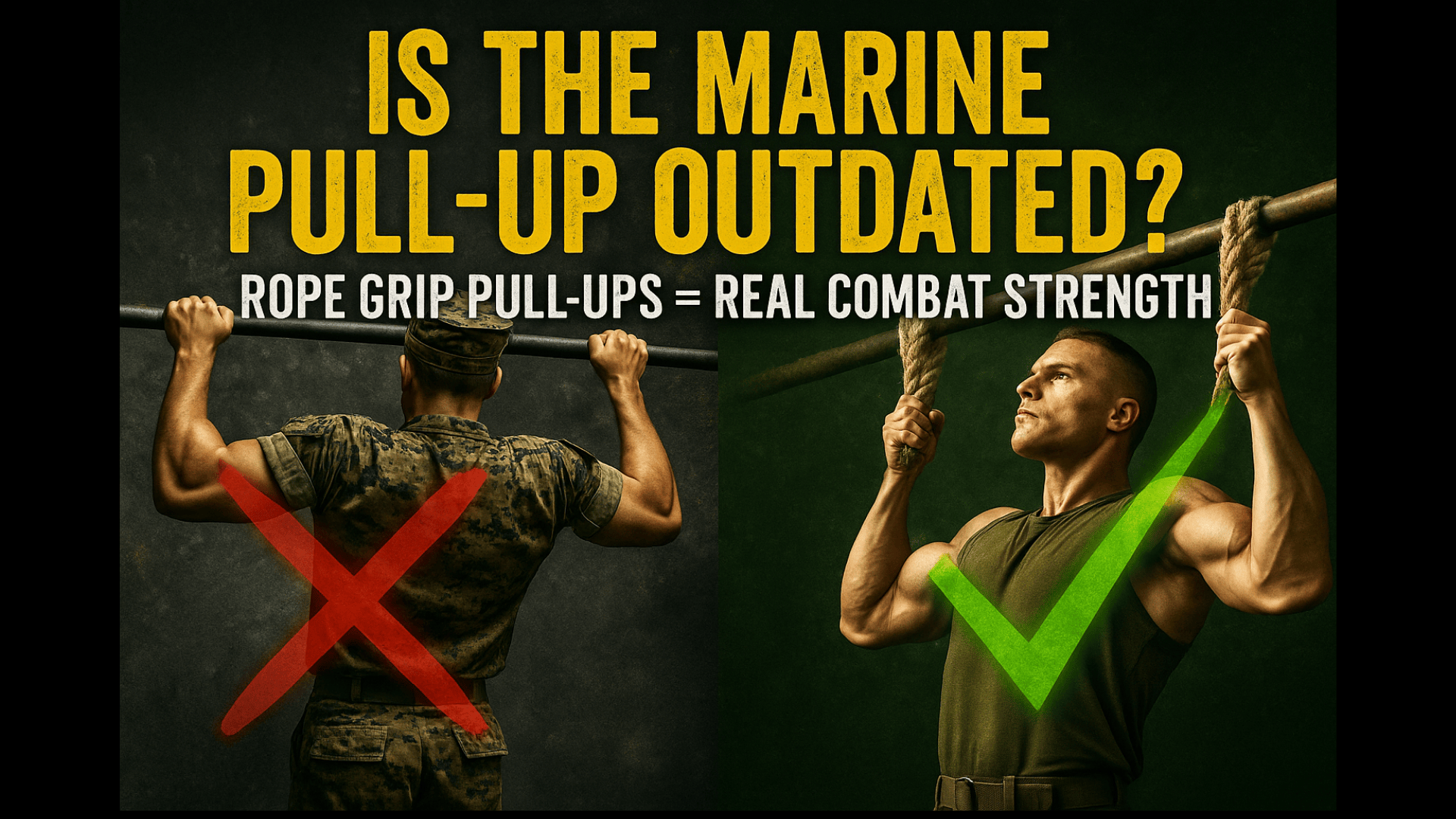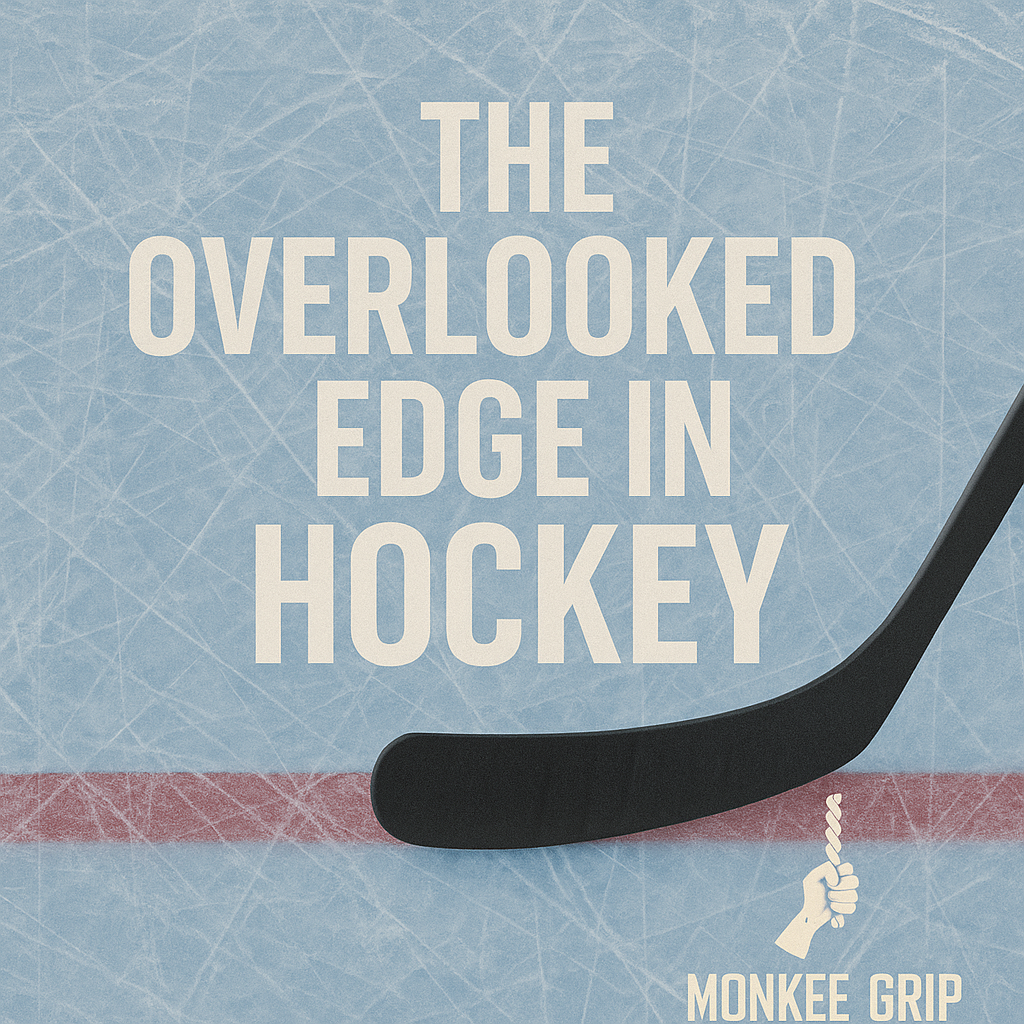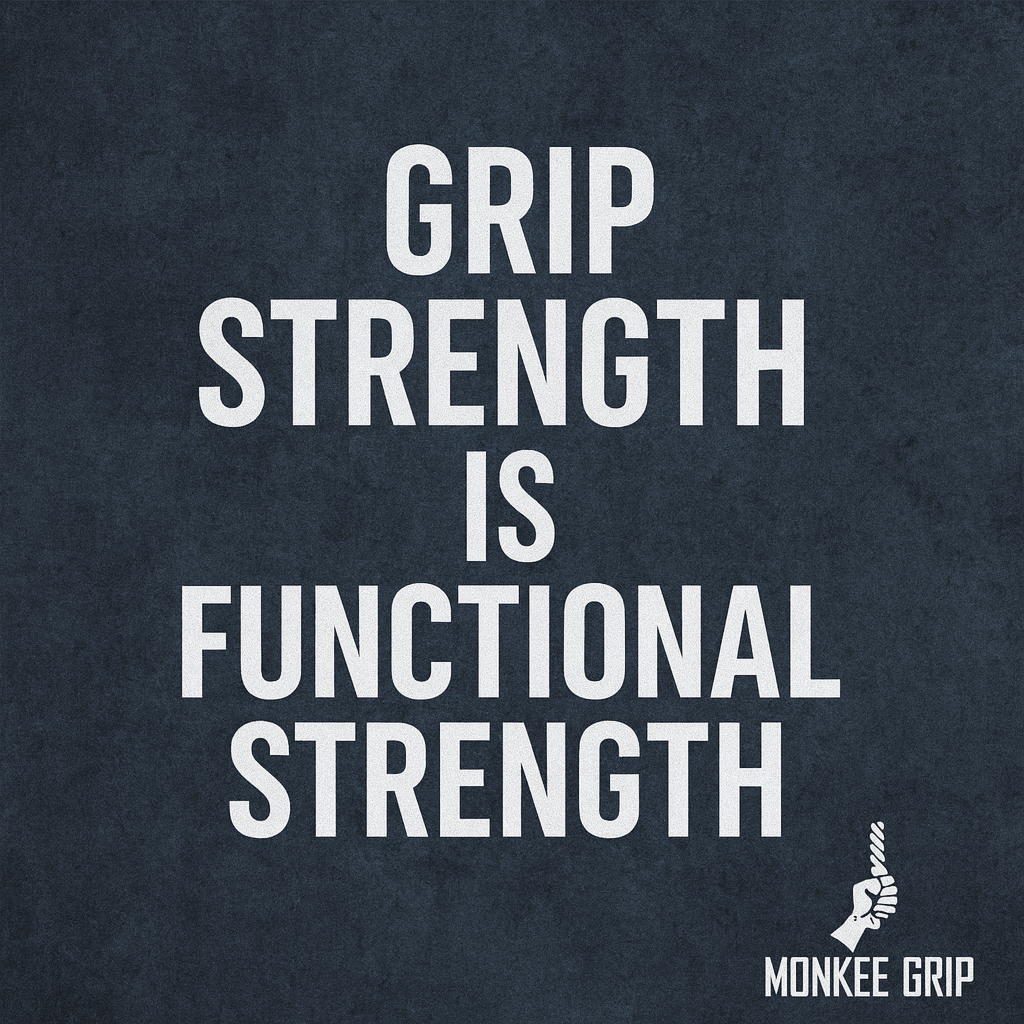Football Grip Strength: The Secret to Better Performance at Every Level
Football Grip Strength: The Secret to Better Performance at Every Level
Football grip strength might sound like a fancy term, but it simply means how strong your hands and forearms are. From youth leagues to the pros, having a powerful grip is like a secret weapon on the field. Think about it: almost every part of football uses your hands – catching, blocking, tackling, and keeping the ball safe. If your grip is weak, you might drop a catch or lose the ball. But with strong hands, you can snag the ball out of the air and hang on tight, even when defenders try to knock it loosenfl.com. In this post, we’ll explore why grip strength is so important for football players at all levels and how you can improve it. We’ll also look at a cool training tool called Monkee Grips that can help you build a gorilla-strong grip while keeping your wrists and elbows safe.
Why Grip Strength Matters in Football
Imagine you’re playing catch with a friend using a slippery water balloon. If you have a strong grip, it’s easier to squeeze and catch it without dropping it. In football, the same idea applies. Strong hands and forearms help you in many ways on the field:
-
Catching the Ball: When a pass comes your way, you need to grab it firmly. A strong grip makes it feel like the ball sticks to your hands. You’ve probably seen amazing one-handed catches on TV – those happen because the receiver’s grip strength is off the charts. With good grip strength, you can pull in passes even if they’re a bit high or low. One NFL trainer noted that virtually every aspect of the game – from catching a football to carrying it – requires powerful hand and forearm musclesnfl.com. In other words, strong hands = better catches.
-
Ball Security: Once you’ve caught the ball or if you’re running with it, you don’t want anyone to steal it from you. Defenders will try to poke or punch the ball out. If your grip is weak, the ball might pop free and cause a fumble. But if you can squeeze the ball like a vice, it’s much harder for them to knock it out. Coaches often say to “high and tight” the ball (hold it high against your chest and tight in your grip). Strong fingers and forearms act like a safety belt for the football. In fact, studies show that improved grip strength leads to better ball control and fewer fumbles in footballfingerweights.com. Think of holding the ball like holding a small puppy – you must be gentle enough not to hurt it but firm enough that it won’t wriggle away. With a powerful grip, that ball isn’t going anywhere!
-
Blocking Opponents: On the line of scrimmage, players constantly use their hands to block. Offensive linemen try to grab onto defenders (within the rules) to keep them from tackling the quarterback or ball carrier. If you’ve ever tried pushing a heavy shopping cart with slippery hands, you know it’s tough to control. But if you get a good grip on it, you can steer it easily. Similarly, a football lineman with strong hands can latch onto the opponent’s pads and control them better during a block. Grip strength helps you hold your ground. As one youth coaching article put it, players need a strong back and grip for blocking and tackling on the fieldcommandfootballacademy.com. Strong hands give you the upper hand (literally!) when you’re battling in the trenches.
-
Tackling and Holding On: Ever play tag and catch someone by the shirt? If your grip is weak, they might slip away. In football, when you go to tackle, sometimes only your fingertips catch the runner’s jersey or arm. A strong grip can make the difference between a missed tackle and a big stop. It helps you hang onto the ball carrier until you bring them down. Defenders with powerful grips can even strip the ball away for a turnover. Think of a tackler’s hands like claws of an eagle grabbing prey – the stronger the claws, the harder it is for the prey (the ball carrier) to break free. Building grip strength will help you finish tackles and even rip the ball out for a game-changing play.
As you can see, from catching passes to making tackles, grip strength plays a huge role. It’s important for youth football players, high schoolers, college athletes, and the pros. A lot of times, young players focus only on big muscles (like legs and chest) and forget about the hands and forearms. But coaches and trainers at top programs know that strong hands can give you a real edge. One training guide reminds us that grip strength is key for ball control and shedding blocks (getting past opponents who are trying to block you)commandfootballacademy.com. No matter your position – receiver, running back, lineman, or linebacker – working on your grip can make you a better player.
Strong Hands = Better Catches and Ball Security
Catching the football and keeping it safe are two skills that separate good players from great ones. And both depend a lot on hand strength. Let’s break it down:
-
Catching the Ball: When a quarterback throws a fast pass, it can hit your hands like a rock. Without a strong grip, hard throws might bounce off or slip through your fingers. Have you ever tried to catch a hard throw and felt it almost knock your hands back? Building up the muscles in your fingers and forearms helps you clamp down on the ball when it touches your hands. Think of your hands like a glue-covered net – the ball hits, and strong fingers wrap around it quickly. That’s how receivers make those highlight catches. They practice squeezing things (like stress balls or grip trainers) so that when game time comes, their hands are like powerful clamps ready to grab the ball out of the air. Strong grip also means you can catch with one hand in a pinch, because each finger is stronger. It’s like having five mini suction cups (your fingers) on the ball!
-
No More Fumbles: After the catch, or when a running back bursts through the line, the last thing you want is a fumble. Fumbling is often caused by a hit loosening your hold on the ball. By training your grip, you make it much harder for defenders to pry the ball loose. One training tool company points out that better grip strength leads to more secure catches and fewer fumblesfingerweights.com. Some coaches even have players practice with a slippery or wet football to test their grip during drills. It’s like trying to hold a wet bar of soap – if your hands are weak, it shoots out, but strong hands will keep it in place. A classic example is when running backs do drills holding two footballs while others try to punch them out. The ones with strong grips hold on tight like the ball is part of their body. Remember, the play isn’t over until you’re down – so a strong grip can be the difference between keeping possession or giving the other team a turnover.
For young readers: imagine carrying a full grocery bag without handles – you’ve got to wrap your arms and hands around it so it won’t drop. If your arms are weak, the bag might slip. But if you have a firm grip, you can walk confidently without worrying. In the same way, football players with strong grips carry the ball confidently, knowing it’s locked in by their fingers and forearm muscles.
Grip Strength for Blocking and Tackling
When it comes to the physical battles in football – like blocking an oncoming defender or tackling a ball-carrier – grip strength often tips the scale in your favor. Here’s how:
-
Dominating in Blocking: Offensive linemen and even receivers or running backs (on certain plays) often have to block defenders. While much of blocking is about body position and strength from your legs and core, your hands play a big role too. Linemen try to get their hands on the defender’s chest pads and grab inside (which is legal in close). If you have a powerful grip, once you latch on, you can steer the defender or at least hold them in place. It’s a bit like arm wrestling – whoever has stronger forearm and hand strength can push the other around. A strong grip lets you maintain your block longer, giving your quarterback time to throw or your running back a lane to run through. Football trainers note that players need strong pulling and grip strength for blocking effectivelycommandfootballacademy.com. Think of trying to hold a big door shut against someone pushing on the other side. If you can grab the door handle firmly and dig in, you have a better chance to keep it closed. On the field, your opponent is that “door” you’re trying to keep closed, and your hands are the latch!
-
Stronger Tackling: Tackling isn’t just about throwing your body at someone; you also need to grab on and not let go. Many tackles are made by grabbing a player’s legs or waist and holding on tight as you bring them down. If your grip is weak, a shifty runner could slip out of your hands, like a slippery fish escaping. But if you have hands like vise-grips, once you grab the runner, you can cling on until they’re on the ground. Picture a game of tug-of-war: if your hands are strong, you can hold the rope tightly and pull with more force. In a tackle, the “rope” is the ball-carrier, and you’re trying to pull them down. Also, defensive players often try to strip the ball when tackling – they rip at it with their hands. A stronger grip increases your chances of yanking the ball free for a fumble. So grip strength not only helps you tackle the player but can also help you take the ball away. Coaches include a lot of pulling exercises (like rows and pull-ups) in training because they build the upper back and grip strength needed for solid tacklingcommandfootballacademy.com.
In short, whether you’re pushing opponents in a block or hanging onto them in a tackle, stronger hands give you an advantage. It makes you feel as if you have hooks for hands, snagging anything (or anyone) that comes into your zone. This is why every football player – from a tiny youth league cornerback to a giant NFL lineman – needs to train their grip. It’s often said that “you’re only as strong as your weakest link,” and for many athletes, the weak link is their gripnfl.com. Don’t let that be you!
How to Improve Grip Strength for Football Players
Now that you know how important grip strength is, you might be wondering how to improve grip for football. The good news is there are lots of fun and challenging exercises to build stronger hands and forearms. You don’t need to be in a college weight room to start – even at home or on the playground you can work on that grip. Here are some ideas for grip strength training for athletes (you!):
-
Squeeze Exercises: This is the simplest way. You can use a stress ball, a tennis ball, or a hand gripper. Squeeze it as hard as you can, hold for a few seconds, then release. Do this for a couple of minutes each day. Over time, you’ll feel your handshake get stronger. It’s like doing bicep curls, but for your fingers!
-
Pull-Up Bar Hangs: If you have access to monkey bars or a pull-up bar, just hanging from it is great for grip. Try to hang as long as possible (just be safe and have someone spot you if needed). You can time yourself and see improvement each week. It’s like you’re a monkey hanging from a tree branch – over time, you’ll be able to hang longer as your grip strengthens.
-
Farmer’s Carries: This exercise has you carry something heavy in each hand (like dumbbells or even buckets filled with water). Walk a certain distance or just hold them for time. It builds support grip strength, which is the kind you use when carrying the football or holding an opponent. Start light and gradually increase the weight or distance. Imagine you’re carrying two heavy suitcases – don’t let them drop! Even carrying your book bag by the handle around the house can be a mini-workout for your grip.
-
Rice Bucket Drill: Some receivers swear by this. You take a bucket of rice (yes, plain uncooked rice) and stick your hands in it. Then open and close your fingers, twist your wrists, and move your hands around in the rice. The resistance of the rice works the small muscles in your hands and forearms. It might sound weird, but it’s like a finger playground in there – and it really works to build endurance and strength in your gripnfl.com. Plus, it’s kind of fun to feel the rice kernels as you train!
-
Towel Pull-Ups or Rope Climbs: If you’re more advanced (and have supervision), try hanging a towel over a pull-up bar and holding each end of the towel to do pull-ups. This thickens the grip and forces your hands to work extra hard to hold on. Rope climbing in a safe environment (like in a gym class with mats) is another fantastic grip challenge. These exercises make a regular bar seem easy by comparison, because you’re using a thick grip which really pushes your forearm muscles.
All these exercises will help improve your grip for football. Remember to train consistently – a little bit of grip work a few times a week can show big results over a season. And just like any other muscle group, give your hands some rest if they feel very sore. The forearm muscles can get tired like any others, so don’t overdo it all at once.
Finally, always prioritize good form and safety. If you’re young, ask a coach or parent to show you how to do these exercises properly. Grip training should be challenging but not hurtful. You’ll know it’s working when jars open easier, handshakes feel firmer, and of course, when you can catch and hold onto the football more securely than before!
Monkee Grips: The Best Grip Training Tool for Football Players

Besides the exercises above, there are special grip tools for football players that can make training even more effective. One of the best grip tools for football players right now is a product called Monkee Grips. This is a tool that many athletes (including several top-tier college and professional football programs) are using in their preseason training to build powerful hands. Let’s talk about what Monkee Grips are and why they’re so helpful.
What are Monkee Grips? – Monkee Grips are basically portable attachments that you can put onto weights, pull-up bars, or other gym equipment to make them harder to hold. They come in different forms (like rope grips or ball-shaped grips), but the idea is the same: they make the bar thicker or add an odd shape so your hands have to work harder to hang on. By doing your normal exercises (pull-ups, dumbbell lifts, etc.) with Monkee Grips attached, you turn every exercise into a grip strength exercise. For example, doing pull-ups while holding thick rope grips will fire up all the muscles in your hands and forearms. Monkee Grips “engage all forearm muscles unlike regular bars” and can enhance your strength and endurance in those musclesmonkeegrip.com. Essentially, they force your grip to catch up to the rest of your body.
Why are they great for football players? – Football players want strong grips, but they also need to avoid injuries like wrist or elbow strains. One cool thing about Monkee Grips is that by making the bar thicker or using a rope, they can actually reduce stress on your joints while still challenging your muscles. Here’s why: a larger handle or grip spreads out the force on your hands and wrists. Think about holding a thin string versus a thick rope. A thin string (like a normal bar) can dig in and put pressure on a small area, sometimes causing strain. A thick rope (like Monkee Grips) spreads out that pressure, which can be easier on your joints. In fact, using larger handles in weightlifting has been shown to reduce grip strain and ease pressure on the elbowslarsonsportsortho.com. Monkee Grips take advantage of this concept. You’ll still be getting a tough workout (your forearms might burn with effort!), but you won’t be putting as much awkward stress on your wrist and elbow tendons. This means you can train grip harder and more often without hurting yourself.
Built for all levels: Whether you’re a young player just starting out or a seasoned pro, Monkee Grips can work for you. They are designed to be versatile and user-friendly. You can attach them to dumbbells as light as 1 pound or a heavy barbell up to 1000 pounds!monkeegrip.com. So if you’re just a beginner, you might put them on a light weight and practice curls or hangs. If you’re more advanced, slap them on a heavy bar for deadlifts or onto a chin-up bar for pull-ups. Because they fit on almost any equipment, they’re great for athletes at every level – from youth and high school players to college and pro athletes. The ability to use them with different weights means you can progressively increase the challenge as you get stronger (this is called progressive grip enhancementmonkeegrip.com).
Real results, used by the best: Monkee Grips aren’t just a gimmick; they’re being used by serious football programs. While we can’t name specific teams, it’s known that several top-tier football teams (think big college programs and pro teams) have added Monkee Grips to their training routines. In preseason workouts, players use Monkee Grips to ramp up their forearm and hand strength before the season starts. It’s become a secret training tool to get that extra edge in grip strength. By the time those players hit the field, their hands are like iron – ready to catch, tackle, and hold onto the ball with confidence. When you use Monkee Grips, you’re essentially training like the pros.
Less Strain, More Gain: A big selling point for Monkee Grips is that they challenge your grip muscles intensely without causing the usual strain that can come from heavy lifting. For example, doing bicep curls or deadlifts with a normal thin bar can sometimes lead to wrist pain or tennis elbow if you grip too hard or use bad form. Monkee Grips encourage a more natural hand position and spread the load, which helps reduce wrist and elbow strain. One analogy is riding a bike with shock absorbers – you still feel the bumps (your muscles still work hard), but the shocks (in this case, the thicker grip) absorb some of the jarring impact that would otherwise hit your joints. So you can build strength safely. According to sports experts, bigger grips allow you to get a good workout while actually helping your elbows feel betterlarsonsportsortho.com. This is awesome for athletes who train often, because you don’t want nagging injuries from your training tools.
In summary, Monkee Grips are a fantastic way to level up your grip training. They turn ordinary exercises into extraordinary grip builders, making sure your football grip strength is game-ready. Plus, they do it in a way that’s joint-friendly and adaptable to anyone. If you’re serious about improving your grip for football, Monkee Grips might just become your new best friend in the gym. After all, having hands as strong as a monkey (hence the name!) can only help you on the gridiron.
Wrapping Up
Grip strength might not be the first thing you think about when training for football, but it’s super important. Strong hands help you catch better, block and tackle harder, and protect the football like a treasure. Whether you’re a middle school player dreaming of Friday night lights or a varsity athlete aiming for a college scholarship, don’t neglect your grip. The best players have powerful handshakes and even more powerful grip on the field.
The great news is you can train grip strength easily – at home, at the gym, or on the playground monkey bars. Consistency is key: a few minutes here and there of squeezing, hanging, or carrying will add up over time. Make it a fun part of your workout routine. Challenge your friends to dead hang contests or see who can crush a soda can (empty one!) the fastest using just one hand. You’ll be building strength without even realizing it.
And if you want to train like the top-tier athletes, tools like Monkee Grips can give you an extra boost. They make your workouts tougher and more effective for your hands, all while keeping you safe from injury. Think of Monkee Grips as a shortcut to gorilla-like grip strength – no tree climbing required (but you’ll be strong enough to do that too!). They’re helping athletes from high school to the NFL get an edge, and they can help you as well.
So next time you hit the field, remember that a lot of football success is literally in your hands. Work on that grip and you’ll notice the difference: firmer catches, stronger tackles, and fewer fumbles. With dedication and the right tools, your hands will become one of your biggest strengths on the football field. Get a grip now, and you’ll be ready to grab victory later! 🏈💪
Sources:
-
Fischer, B. (2014). Get a grip: Building hand and forearm strength. NFL.com – Emphasizes that every aspect of football (catching, blocking, carrying) benefits from stronger hands and forearmsnfl.com. Also explains different types of grip and basic exercises to train them.
-
Command Football Academy (2025). Top 3 Strength Exercises for Middle School Football Players. – Notes that football players need strong grip for tackling, blocking, and ball security. Improved grip strength is key for ball control and shedding blockscommandfootballacademy.comcommandfootballacademy.com.
-
FingerWeights Blog (2025). Boost Your Football Skills by Strengthening Finger Grip. – Highlights that better grip strength leads to better ball control and fewer fumblesfingerweights.com, and stronger fingers help secure catches.
-
Larson Sports & Orthopaedics. Reduce Grip Strain – Fat Gripz. – Explains that using larger diameter grips can reduce strain on wrists and elbows while still giving a good workoutlarsonsportsortho.com. This concept is similar to how Monkee Grips work to challenge muscles but lower joint stress.
-
MonkeeGrip.com – Product Info: Monkee Grips engage all forearm muscles unlike regular bars, enhancing strength and endurancemonkeegrip.com. They attach to weights from 1–1000 lbs, so are great for beginners and pros alike, allowing progressive grip trainingmonkeegrip.com. This shows Monkee Grips’ versatility and why they’re used at all levels for grip strength training.

